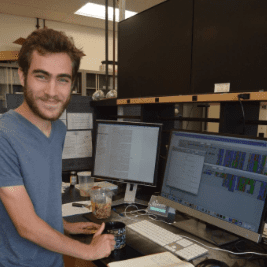Life on Earth is full of dynamic and complex interactions between organisms. Some of these interactions are mutualistic, where all parties benefit from the relationship. Others are commensalistic, where one organism benefits and the other isn't really affected. Then there are the parasites, organisms that live and prey on others causing them harm.
Parasites are everywhere and they come in all different shapes and sizes. There are single celled organisms, creepy crawly worms, and nasty bugs too. Lice infest our hair, tapeworms infest our intestines, and on occasion, brain eating Amoeba eat our brains. But of all the parasites that affect humans, the most feared and most deadly are single celled microorganisms from the genus Plasmodium that cause malaria.
The Plasmodium cells that cause malaria are transmitted by female mosquitoes from the genus Anopheles. These mosquitoes actually pick up the disease from biting infected humans resulting in a continuous cycle of transmission. In 2016, Malaria was estimated to have infected 216 million people, killing around half a million. Understanding how Plasmodium works to cause disease in humans is critical for developing effective treatments for those infected.

Plasmodium feeds on red blood cells. Upon first infection, the parasite travels to the liver where it begins to establish an infection. Then, Plasmodium cells infiltrate red blood cells where they reproduce asexually before reaching a critical mass, causing the red blood cells to burst. Red blood cells are generally invisible to the immune system, meaning that the malaria parasite basically hides from the immune system by residing in the red blood cells which then clot to prevent destruction by the spleen.
There are a number of different treatments for Malaria, the oldest being quinine, an extract from the cinchona tree native to South America. You might be familiar with quinine as it is the compound responsible for the bitter taste of tonic water. In fact, the antimalarial properties of quinine was directly responsible for the creation of the Gin & Tonic. During the British occupation of India in the 1850s, British soldiers were given several daily rations of tonic water to prevent malaria infections. They often mixed the tonic water with gin as tonic water isn't too pleasant to drink on it's own, and thus one of the most famous mixed drinks in the world was born out of the need to combat malaria. There are of course newer and better antimalarial drugs that exist, but quinine is still used as a secondary treatment for malaria.
Much time has passed since the British occupation of India and malaria is still one of the biggest parasitic threats to human populations. Come to the Athens Science Cafe on September 26th at Little King's to hear more about Plasmodium and how we can move towards a world without Malaria from David Peterson, faculty in UGA's Center for Tropical and Emerging Global Diseases!

About the Author
 |
Max Barnhart is a graduate student studying plant biology and genomics at the University of Georgia. Growing up in Buffalo, NY he is a diehard fan of the Bills and Sabres and is also an avid practitioner of martial arts, holding a 2nd degree black belt in Taekwondo. He can be contacted at maxbarnhart@uga.edu or @MaxBarnhart1749. |
About the Author
Max Barnhart is a PhD studying the evolution of heat stress resistance in sunflowers at the University of Georgia. He is also the current Co-Editor-in-Chief of the Athens Science Observer. Growing up in Buffalo, NY he is a diehard fan of the Bills and Sabres and is also an avid practitioner of martial arts, holding a 2nd degree black belt in Taekwondo. You can contact Max at maxbarnhart@uga.edu or @MaxHBarnhart.
- Max Barnharthttps://athensscienceobserver.com/author/max-barnhart/October 21, 2021
- Max Barnharthttps://athensscienceobserver.com/author/max-barnhart/November 11, 2020
- Max Barnharthttps://athensscienceobserver.com/author/max-barnhart/October 19, 2019
- Max Barnharthttps://athensscienceobserver.com/author/max-barnhart/October 15, 2019








